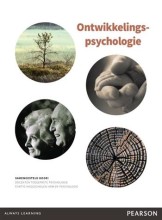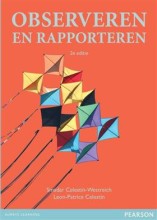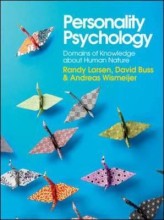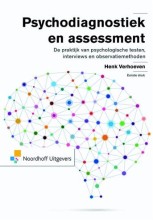Samenvatting: Introducing Intercultural Communication Global Cultures And Contexts | 9781473909113 | Shuang Liu, et al
- Deze + 400k samenvattingen
- Een unieke studie- en oefentool
- Nooit meer iets twee keer studeren
- Haal de cijfers waar je op hoopt
- 100% zeker alles onthouden
Lees hier de samenvatting en de meest belangrijke oefenvragen van Introducing Intercultural Communication Global Cultures and Contexts | 9781473909113 | Shuang Liu; Zala Volcic; Cindy Gallois
-
1 Challenges of living in a global society (week 1)
-
1.2 Contributors to cultural diversity
Dit is een preview. Er zijn 2 andere flashcards beschikbaar voor hoofdstuk 1.2
Laat hier meer flashcards zien -
Welke voordelen zijn er van het gebruik van internet ten opzichte van fysiek reizen?
- Het kost minder
- Verloopt sneller
- Gemakkelijk in gebruik
- Gelijkwaardig aan 'face-to-face' communicatie
-
Wat is één voordeel en één nadeel van de verbetering van het transport (met betrekking tot intercultureel contact)
- Voordeel: Families en individuen kunnen zich makkelijk verplaatsen voor diverse doeleinden (carrière, op bezoek bij verre familie)
- Nadeel: Landen trekken zich terug en proberen zich te isoleren van 'vreemdelingen' die het land binnen willen komen. Dit heeft vaak te maken met een vreemdelingenangst of een aversie tegen het onbekende
-
1.2.1 Global economy and business transactions
Dit is een preview. Er zijn 1 andere flashcards beschikbaar voor hoofdstuk 1.2.1
Laat hier meer flashcards zien -
Wat is globale transformatie?
Globale transformatie verwijst naar de wereldwijde economische en technische veranderingen die invloed hebben op hoe mensen zich tot elkaar verhouden. -
Op welke vlakken biedt culturele diversiteit mogelijkheden?
- Economisch (export en import van andersoortig voedsel, kleding etc.)
- Maakt samenleving bekend met, en op hun gemak met verschillende culturen en landen
-
1.2.2 Mass migration and international exchange
Dit is een preview. Er zijn 1 andere flashcards beschikbaar voor hoofdstuk 1.2.2
Laat hier meer flashcards zien -
Welke factor heeft het meest bijgedragen aan de multiculturele omgeving?
De factor die het meest heeft bijgedragen aan de multiculturele omgeving is de blijvend groeiende stroom van mensen door migratie en internationale uitwisseling. -
Om welke soorten redenen verhuizen migranten naar een gastland?
- Toegang verkrijgen tot een betere leefomgeving
- Kinderen beter/goed onderwijs kunnen bieden in een Engelssprekend land
- Toevluchtsoord/Politieke bescherming
-
1.3.1 Building intercultural understanding
Dit is een preview. Er zijn 6 andere flashcards beschikbaar voor hoofdstuk 1.3.1
Laat hier meer flashcards zien -
Wat is culturele socialisatie?
Culturele socialisatie zijn de onbewuste (negatieve) opvattingen over cultuur, waarden en normen. -
Tot welke drie zaken kan ethnocentrisme toe leiden?
- Vooroordelen
- Stereotyperingen
- Discriminatie
-
Waar zorgt Interculturele kennis voor?
- Het verbreden van onze visie
- Het in twijfel trekken van het eigen standpunt (dat men altijd als vanzelfsprekend ziet)
-
1.3.2 Promoting international business exchange
Dit is een preview. Er zijn 1 andere flashcards beschikbaar voor hoofdstuk 1.3.2
Laat hier meer flashcards zien -
Welke drie competenties die essentieel zijn in de wereldwijde werkomgeving van de 21e eeuw zijn er opgesteld door International Business Tend report?
- Interculturele communicatie vaardigheden (intercultural communication skills)
- Probleemoplossend vermogen (problem-solving ability)
- Wereldwijd leiderschap (global leadership)
- Hogere cijfers + sneller leren
- Niets twee keer studeren
- 100% zeker alles onthouden
Onderwerpen gerelateerd aan Samenvatting: Introducing Intercultural Communication Global Cultures And Contexts
-
Challenges of living in a global society - Necessity and benefits of intercultural communication - Facilitating cross-cultural adaptation
-
Understanding communication - The multifaceted nature of communication
-
Understanding communication - Current issues surrounding theorizing communication
-
Understanding communication - Communication and culture
-
Understanding culture - Definitions and components of culture - Defining culture
-
Understanding culture - Definitions and components of culture - Components of culture
-
Understanding culture - Characteristics of culture
-
Understanding culture - Subcultures
-
The influence of culture on perception - Stages of the perception process - The selection stage
-
The influence of culture on perception - Culture and categorization
-
The influence of culture on perception - Perception and intercultural communication - Ethnocentrism
-
The influence of culture on perception - Perception and intercultural communication - Prejudice
-
The influence of culture on perception - Perception and intercultural communication - Racism
-
Cultural and value orientations - Hofstede's cultural dimensions - Masculinity - femininity
-
Cultural and value orientations - Hofstede's cultural dimensions - Long-term and short-term orientation
-
Cultural and value orientations - Schwartz's cultural value theory
-
Cultural and value orientations - Intercultural communication ethics - Approaches to ethics
-
Cultural and value orientations - Intercultural communication ethics - Principles of ethical intercultural communication
-
Categorization, subgroups and identities - Introduction
-
Categorization, subgroups and identities - Categorization and the formation of identities
-
Categorization, subgroups and identities - Subgroup memberships and identities
-
Categorization, subgroups and identities - Identities and intercultural communication - The role of identities in intercultural relations
-
Verbal communication and culture - The components and characteristics of verbal codes - The components of human language
-
Verbal communication and culture - Language, culture and discourse
-
Verbal communication and culture - Cultural variations in verbal communication - Communication styles and culture
-
Verbal communication and culture - Cultural variations in verbal communication - Gender and communication
-
Nonverbal communication and culture
-
Immigration and acculturation - Migration and cultural diversity - Identity reconstruction for immigrants
-
Immigration and acculturation - Diversity and multiculturalism
-
Immigration and acculturation - Culture shock and acculturation orientations
-
Immigration and acculturation - Cross-cultural adaptation
-
Managing intercultural conflicts - Introduction
-
Managing intercultural conflicts - Potential sources of intercultural conflict
-
Managing intercultural conflicts - Conflict stages and conflict management approaches and styles
-
Managing intercultural conflicts - Influence of culture on conflict management
-
Mass media, technology and cultural change - Globalization, technology and mass media
-
Mass media and symbolyc social reality - Research on media efffects - Anudience analysis
-
Mass media and symbolyc social reality - Research on media efffects - Media effects on perceptions of social reality
-
Mass media, technology and cultural change - Mass media and cultural change - Mass media and cultural learning
-
Becoming an effective intercultural communicator































